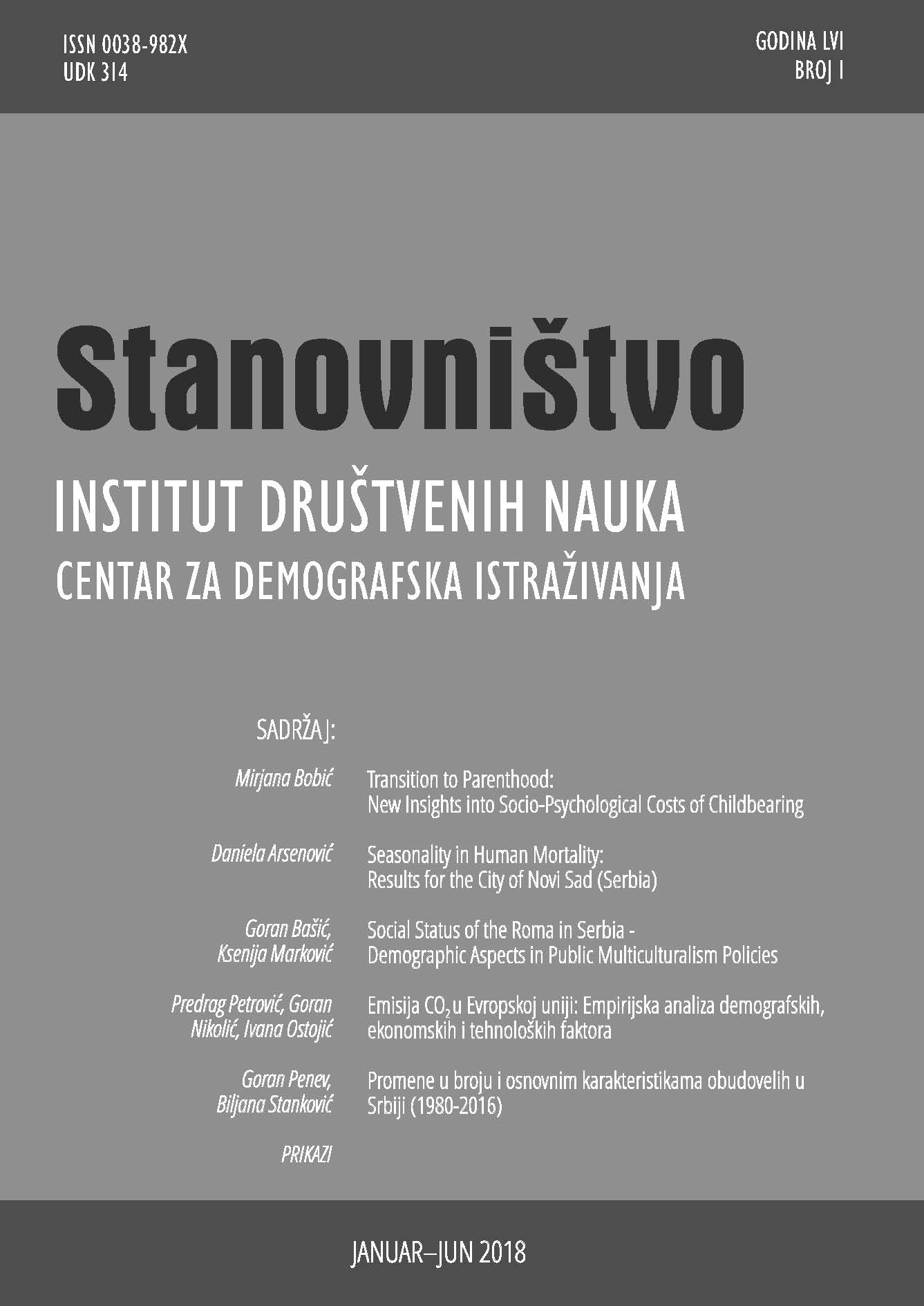Promene u broju i osnovnim karakteristikama obudovelih
u Srbiji (1980-2016)
Widowed Persons in Serbia: Change in Number and General Demographic Characteristics (1980-2016)
Author(s): Goran D. Penev, Biljana B. StankovićSubject(s): Demography and human biology
Published by: Институт друштвених наука
Keywords: widowhood; elderly; gender differences; one-person households; population ageing
Summary/Abstract: Widowed persons represent a vulnerable population group, especially because the loss of a spouse is usually a part of old people’s experience. In old age, people are typically faced with multiple constraints, related to health, financial resources, family and other social relationships. Changes that accompany the death of spouse and widowhood are generally long-term and largely negative for many widowed persons.With advanced population ageing, the share of the widowed in the total popula-tion is increasing, and this is also true for Serbia. With a crude widowhood rate of 11.7% in 2011, Serbia is at the very top of the list of European countries and has the highest widowhood rate of men (5.2%). However, widowhood primarily af-fects women, and 78% of the widowed in Serbia are widows. This paper analyses the widowhood in Serbia from 1980 to 2016. The main ob-jective is to describe the trends and characteristics of widowed persons in this period. This article is primarily based on the analysis of previously unpublished census results and vital statistics data.In Serbia, in the period of 1981-2011, there was a continuous increase in the number of widowed persons and in 2011 it was 37.5% higher than 30 years be-fore. Furthermore, the share of the widowed in the total population increased significantly (from 8.5% to 11.7%). Widowhood is considerably more present among women and the elderly. More than four fifths of the widowed are older than 60 years, and the values of all used demographic indicators of widowhood are three or four times higher in women. The authors mention the noticeable decrease in remarriage among widowed persons and a major decrease in the nuptiality rate of the widowed, especially among widowers. The observed educa-tional structure of the widowed shows a higher percentage of persons with a lower educational level. Another significant finding was that the widowed represent half of the total number of people who live alone in one-person households. Among them, more than four fifths are 65 years old or older, and a full half are older than 75.The authors concluded that further quantitative and qualitative studies of demo-graphic, but also social, psychological, health and other aspects of the widowed in Serbia are needed. Additionally, these results can represent the analytical basis for policy makers to identify needs and define different measures and actions directed towards the elderly, among which widowed persons, and especially wid-owers, are particularly vulnerable categories.
Journal: Stanovništvo
- Issue Year: 56/2018
- Issue No: 1
- Page Range: 83-108
- Page Count: 26
- Language: Serbian

